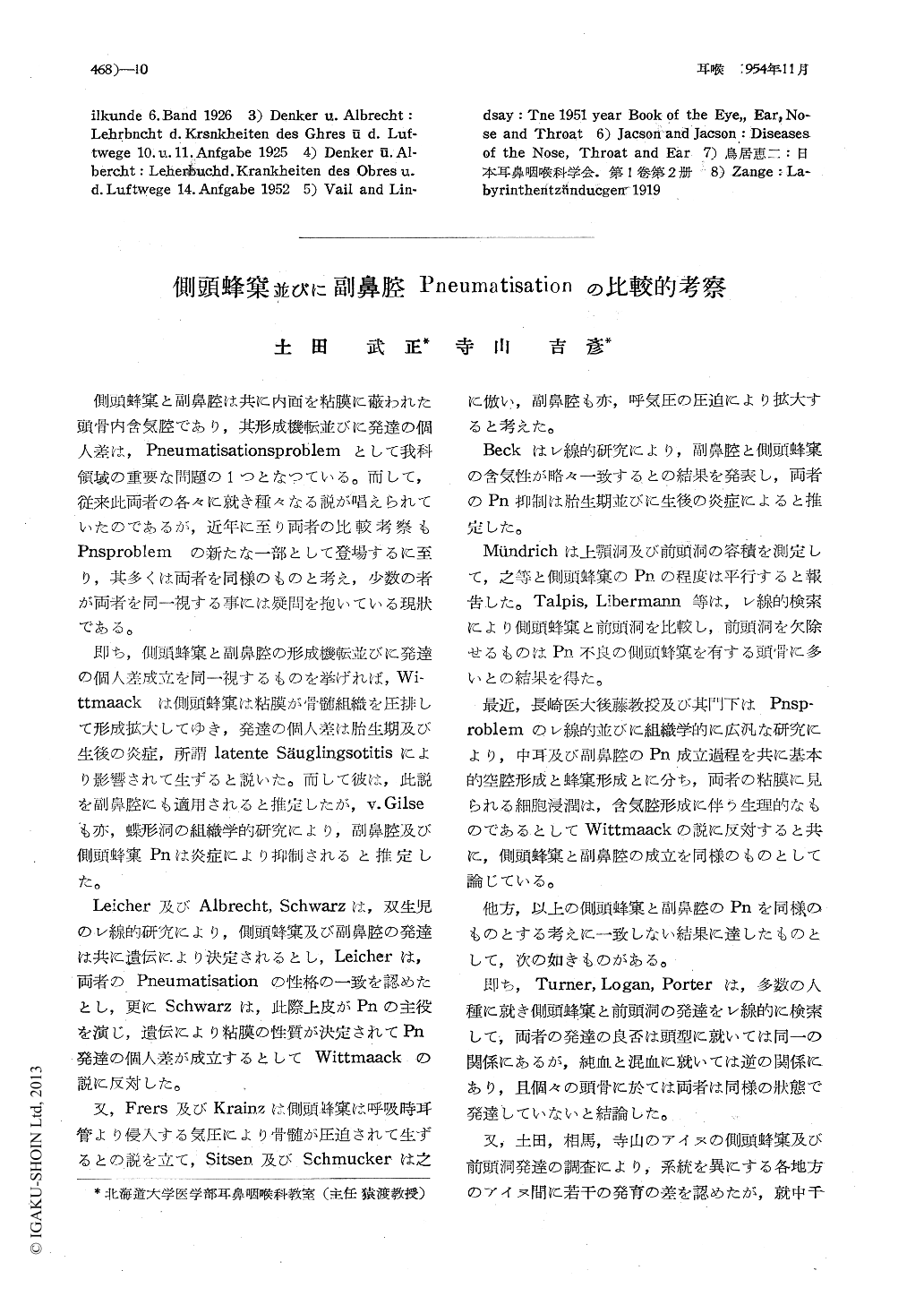- 有料閲覧
- 文献概要
- 1ページ目
側頭蜂窠と副鼻腔は共に内面を粘膜に蔽われた頭骨内含気腔であり,其形成機転並びに発達の個人差は,Pneumatisationsproblemとして我科領域の重要な問題の1つとなつている。而して,従来此両者の各々に就き種々なる説が唱えられていたのであるが,近年に至り両者の比較考察もPnsproblemの新たな一部として登場するに至り,其多くは両者を同樣のものと考え,少数の者が両者を同一視する事には疑問を抱いている現状である。
即ち,側頭蜂窠と副鼻腔の形成機転並びに発達の個人差成立を同一視するものを挙げれば,Wittmaackは側頭蜂窠は粘膜が骨髄組織を圧排して形成拡大してゆき,発達の個人差は胎生期及び生後の炎症,所謂latente Sauglingsotitisにより影響されて生ずると説いた。而して彼は,此説を副鼻腔にも適用されると推定したが,v. Gilseも亦,蝶形洞の組織学的研究により,副鼻腔及び側頭蜂窠Pnは炎症により抑制されると推定した。
DOTA and Terayama maintain that there are points that do strongly differ in the process of pneumatization of the two structures namely, the air cells of the temporol bone and the air cavity of paranasal sinus, as follows: (1) Developmentally, they are derived from mesodermic tisses, but, the former is essentially the outcome of metamorphosis of the spongy substance of the flat bone in part while, the latter is not only unrelated to this spongy substance but, the process of growth is totally different.
(2) The cavity wall in the former is composed of bony lamellae but, in the latter of compact bone.
(3) Mesodermic producioc of round cells in the two differ from each other by cause and effect.
(4) In the growth of the two there is a common inherited force of element that effects them alike but, the result produced by this force is different.

Copyright © 1954, Igaku-Shoin Ltd. All rights reserved.


